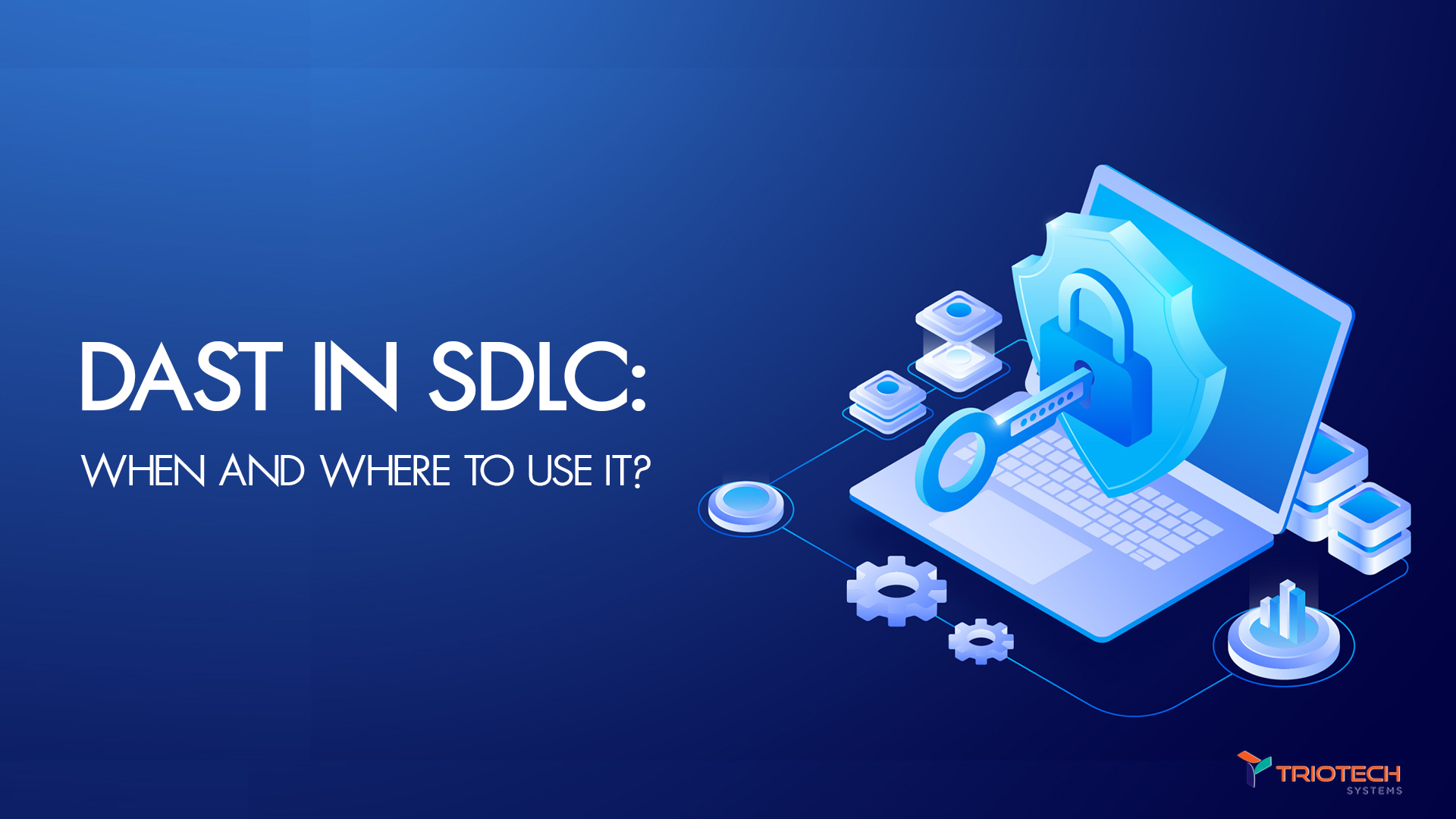Implementing DAST in SDLC: Optimal Timing and Integration
The rise of cyber threats makes it crucial to prioritize security in development, as neglect can lead to breaches and loss of trust. Rushed SDLC phases often leave hidden vulnerabilities, exposing applications and damaging reputations.
However, you can incorporate Dynamic Application Security Testing (DAST) into your SDLC to catch vulnerabilities early. This article covers DAST’s ideal timing and integration to fortify your applications against attacks.
Quick Overview of Dynamic Testing in SDLC
Topic |
Key Points |
| When to use DAST? | After initial development, before major releases, during CI/CD. |
| Where to Integrate DAST? | In testing environments, alongside other testing methods, during compliance assessments. |
| Benefits: | Real-world attack simulation, timely remediation, enhanced security posture. |
Now, let’s dive deeper and grasp the critical concepts:
Understanding DAST in SDLC
DAST, or Dynamic Application Security Testing, is a security technique that identifies vulnerabilities by simulating real-world attacks on live applications. This testing method helps detect weak points that attackers could exploit, making it a proactive approach to strengthening application security. In contrast, the Software Development Life Cycle (SDLC) refers to the entire process of creating software, structured into phases like planning, designing, coding, testing, and deploying to ensure a well-rounded product.
DAST integration into SDLC allows for early detection of security issues before deployment. By embedding DAST in crucial development stages, teams can address vulnerabilities as they arise, ensuring a more secure and dependable application when it reaches users.
Read More: What is Dynamic Application Security Testing (DAST)?
Dynamic Application Security Testing (DAST) in Software Development Life Cycle (SDLC): When To Use it?
1. After the Initial Development Phase
DAST should be conducted in a staging environment, which closely mimics the production environment before the application goes live. This timing allows developers to identify and address vulnerabilities without significantly impacting the project timeline.
2. Before Major Releases
Conduct DAST tests before significant updates or feature releases. This practice ensures that new code does not introduce vulnerabilities that could compromise the entire application.
3. During Continuous Integration (CI) Pipelines
Integrate DAST into your Continuous Integration/Continuous Deployment (CI/CD) pipelines. CI/CD is a practice that automates the software development process, allowing for frequent code changes and deployments.
Running DAST regularly throughout development enables teams to catch vulnerabilities early and reduce remediation costs.
Read Also: Key DAST Vulnerabilities: Explained with Examples!
Dynamic Application Security Testing (DAST) in Software Development Life Cycle (SDLC): Where To Use it?
1. In Testing Environments
Conduct DAST in controlled testing environments that mimic production settings as closely as possible. This approach identifies vulnerabilities without exposing live data or systems to risk.
2. During Compliance Assessments
Incorporate DAST during compliance checks to ensure your application meets industry standards. Many regulatory frameworks mandate regular security testing, and DAST can help demonstrate compliance.
3. Alongside Other Testing Methods
You must combine DAST with Static Application Security Testing (SAST) and Interactive Application Security Testing (IAST). A layered security approach will provide comprehensive coverage and help you identify various vulnerabilities.
Benefits of DAST in the SDLC
- Real-World Attack Simulation: DAST identifies vulnerabilities in a running application, showing how an attacker might exploit weaknesses.
- Timely Remediation: Early identification of vulnerabilities allows developers to address issues before they escalate, minimizing potential damage.
- Enhanced Security Posture: Regular DAST implementation fosters a security culture within development teams, leading to more secure applications.
Enhance Security: DAST Services by TRIOTECH SYSTEMS!
At Triotech Systems, we specialize in providing top-notch Dynamic Application Security Testing (DAST) services tailored to meet your unique business needs. Our DAST solutions help you identify and remediate vulnerabilities in real time, ensuring your applications are secure and resilient against potential threats.
Our DAST services include:
- Comprehensive vulnerability assessments to identify weaknesses.
- Real-time feedback for developers to quickly address issues.
- Integration with your existing CI/CD pipelines for seamless security checks.
Contact Us Now For A Consultation!
Conclusion & Next Steps
Integrating Dynamic Application Security Testing (DAST) into your Software Development Life Cycle (SDLC) is crucial for developing secure applications. You can effectively identify and mitigate vulnerabilities by integrating DAST after initial development, before major releases, and during continuous integration.
Summary of Key Takeaways
- Implement DAST after development and before release.
- Use DAST in testing environments for accurate results.
- Combine DAST with other security testing methods (SAST, IAST, SCA) for comprehensive coverage.
Explore our Comprehensive Application Security Services at Triotech Systems!




